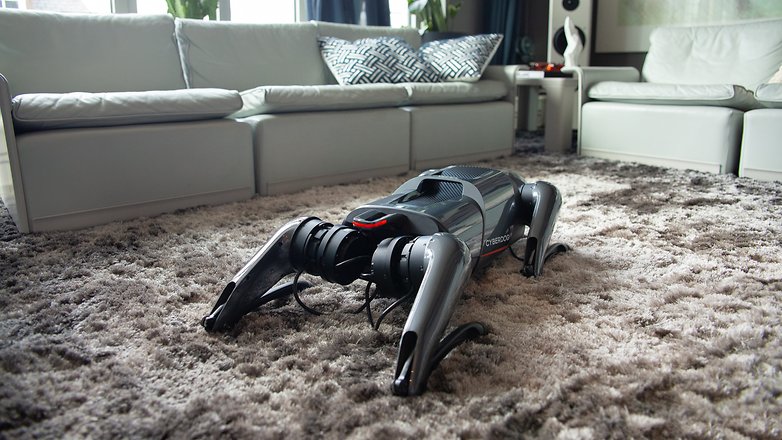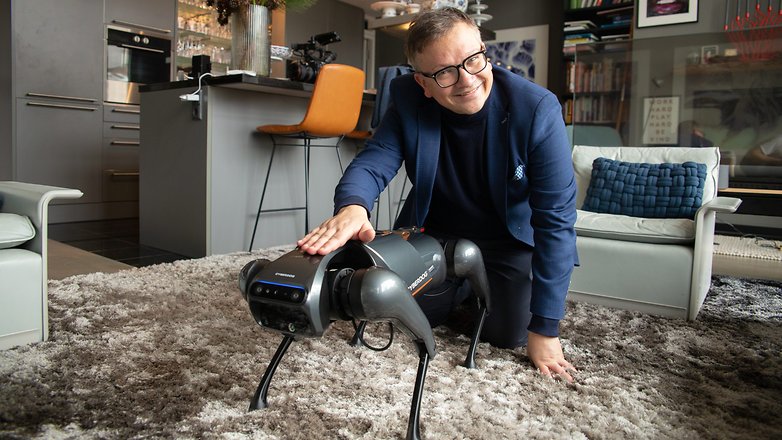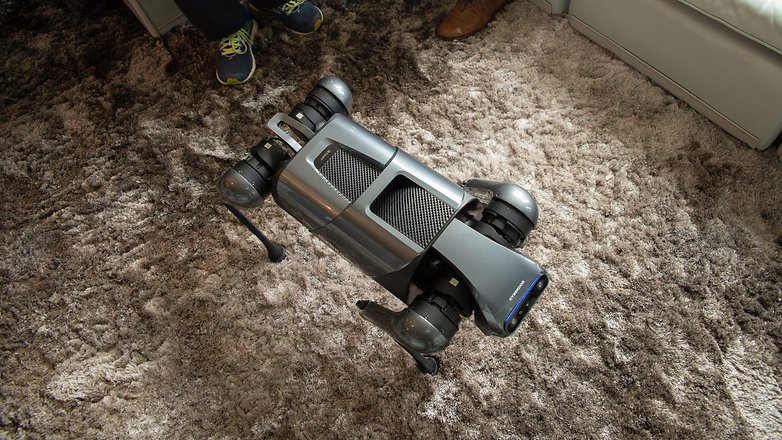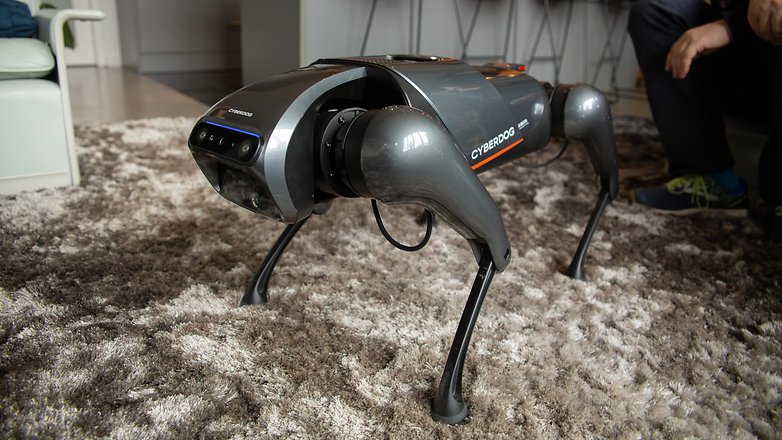
[ad_1]
Maybe the Xiaomi Cyberdog will soon be able to write its very own hands-on, introduction included. Until then, you will have to make do with me: I had the opportunity to spend an hour with the robot dog from the future and talk to Xiaomi about the vision behind the Cyberdog. Read and see more in our first hands-on.
Xiaomi Cyberdog: Design and operation
If you’ve used a browser and surfed the Internet in the last five years, you’ll probably recognize the Xiaomi Cyberdog.
It resembles the four-legged Spot from Boston Dynamics on the outside, but it is considerably cheaper. While Boston Dynamics is currently charging $74,500 for the Spot, while Xiaomi is selling the Cyberdog for a mere $1,500 (relatively pocket change), albeit currently only to developers and engineers. They are supposed to develop new concepts and uses for the open-source robot. The first batch of the Cyberdog is already sold out.

The operating weight of the Xiaomi dog stands at 14 kilograms. Made from plastic, the casing feels solidly crafted and of high quality. In any case, when the robot dog rolled across the floor, I wasn’t afraid of needing a broom and dustpan right away. The casing should definitely be solid – with a theoretical top speed of around 11.5 kilometers per hour.
The Xiaomi Cyberdog is primarily operated via the corresponding smartphone app. You can navigate the robot freely through the room via a virtual double control pad and use it as a mobile surveillance camera, for example. You can also define paths that the Cyberdog always follows and thus patrols certain areas. Last but not least, there is a “Follow” mode. Here, the robot attaches itself to the heels of a certain person.

In addition, the robot has a touchpad on its head, which is primarily used to check the battery status. The Cyberdog lasts up to 160 minutes on one charge, depending on usage. Charging via the USB-C port takes up to four hours. Speaking of ports: You can attach additional accessories to the robot via the two USB-C ports and the HDMI port. I am curious when the first cyberdogs with advertising displays will parade themselves through a shopping mall.
Xiaomi Cyberdog: Hardware and practical impressions
I feel that Xiaomi achieved an impressively low price for the Cyberdog using off-the-shelf components.
Intel’s Realsense D455 module with a pair of depth cameras and an RGB sensor is in the head. There are also six microphones in the plastic housing. Xiaomi is the one that manufactures the servo motors in the legs itself.
Standard technology is also used under the hood, namely Nvidia’s Jetson Xavier NX. The “world’s smallest supercomputer”, as Nvidia calls it, relies on a powerful GPU with 384 Cuda and 48 Tensor cores, which is important for fast evaluation of images and navigation, for example. There is also a hexa-core CPU with six Carmel cores and two dedicated AI cores.

Ubuntu, a Linux distribution, is used as the operating system of choice. As mentioned at the beginning, Xiaomi initially targets developers with the Cyberdog to open up other possible fields of application. In the “lifestyle” sector, the manufacturer sees the robot as a guaranteed house-trained toy or as a supplement to the smarthome. In China, Xiaomi’s own voice assistant Xiao AI runs on the Cyberdog.
Of course, commercial applications are also conceivable, for example as a mobile advertising platform, an electronic waiter or free-moving surveillance camera. The Cyberdog could also perform a good job when it comes to disaster control, for example, scouting out areas that are too dangerous for humans. The same applies to possible military deployment scenarios.

After my brief encounter with the Cyberdog, I’m torn. The robot dog is absolutely fascinating, and I would actually prefer to have one right away. But just because of its fluid movements, there is also something unsettling about the machine, and it hits me full on with the Uncanny Valley feeling. As Stuart Kauffmann wrote about AI: “There is no one at home there” – as alive as the dog seems. Ultimately, the cyberdog will always do the owner’s bidding, no matter the intention behind it.
Early Verdict
What did I take away from my encounter with the Cyberdog? The fact that this four-legged robot and possibly soon also two-legged robots will mingle among us is closer than we might think. The technology is ready, and manufacturers such as Nvidia and Intel can supply all the necessary components en masse. What’s missing now is the one “killer application” that will hoist the robots onto the mass market. Xiaomi is working on it.

[ad_2]






